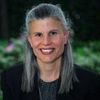September 3, 2014, marks the 50th anniversary of America's passage of the Wilderness Act.
It's fair to say that we each have our own relationship with wilderness. For me, wilderness has touched me in very special ways: I once scattered ashes of a dear friend in the Arctic National Wildlife Refuge, a place of peace, solace, and wonder for her, a place she wanted to belong to for eternity. I especially remember the time I pitched a tent in Okefenokee National Wildlife Refuge, dozed to the sound of a myriad of frogs, and awoke to a chorus of wood storks and warblers. While there I canoed through tea-colored waters, cypress forests, and wetlands -- a home to bears, herons, alligators, and egrets. It was the most peaceful I have ever felt.
Wilderness is special, for us and for wildlife. It provides some of the last great places for wildlife to be truly wild. In Charles M. Russell National Wildlife Refuge, I released black-footed ferrets back into the wilderness. I will always remember how eager these little critters were to break out of their cages. They seemed to know the great freedom that awaited them. At that moment, I wished I could be as free and wild as they were: no walls, no boundaries, no responsibilities.
Many people are not as lucky as I - to have wilderness areas be part of such life-changing moments. So many have not had the chance to venture far from home, to stand upon the sand and see a great ocean stretch on to the horizon; to look upward at the face of a mountain and not able to quite see to its peak above the clouds; to experience the vastness of the Arctic. Too many people haven't had the chance to simply rest in a clearing surrounded by great woods, hearing nothing - stillness - and at the same time, everything - the hum of crickets, the chirp of songbirds, the subtle movement of grasses on the breeze - all the sounds of a living, breathing world.
In the United States, "wilderness" has an official definition, and one that has been crucial in helping to conserve and preserve such majestic places. Here, wilderness places are legally protected as "area[s] where the earth and its community of life are untrammeled by man, where man himself is a visitor who does not remain." These are the places where streams, not the sounds of traffic, run in the background, where there is never a need to distinguish between smog and low cloud cover. They are places where we feel infinitesimally small. And it is this characteristic of wilderness - its independent vastness - that inspires awe in us.
There is another element to wilderness aside from its immense unknowability that elicits such awe, and that is the wild's inhabitants - the myriad species of wildlife that exist even in the places where we can't see them. It is the awe that comes from knowing that from atop a bluff a cougar is looking out across the Grand Canyon, or a herd of caribou is racing across the vast tundra of Alaska. In wilderness we realize that we share the world with such incredible diversity.
Through wildlife we remember that we, too, are a part of wilderness, even when we are physically apart from it. So the truth is, no matter how far we go to try to separate ourselves from what is wild, we cannot ever truly reject that we need it. The waters, the trees, the fish, and other wildlife are all life-giving elements of our world, are its heart. If we were to ever completely lose sight of the soft green glow in the eyes of a wolf, we would lose sight of ourselves. All the walls we have built will do nothing but close us in, and all of the roads we have paved will lead us nowhere.
This essay was originally published in the Autumn 2014 issue of Earth Island Journal.
